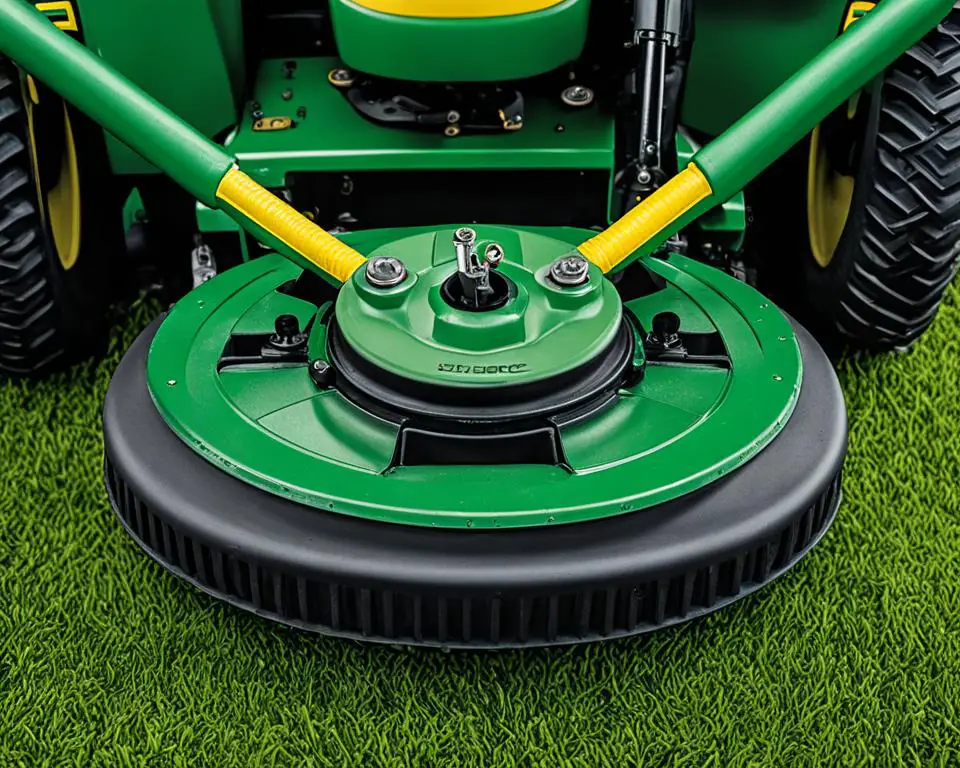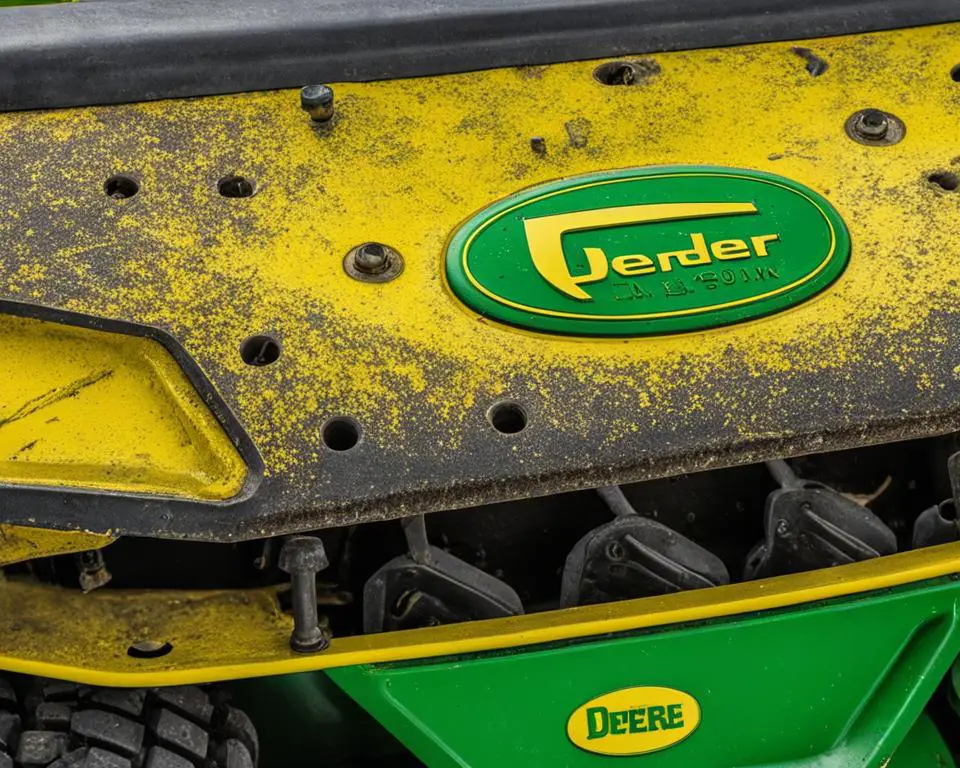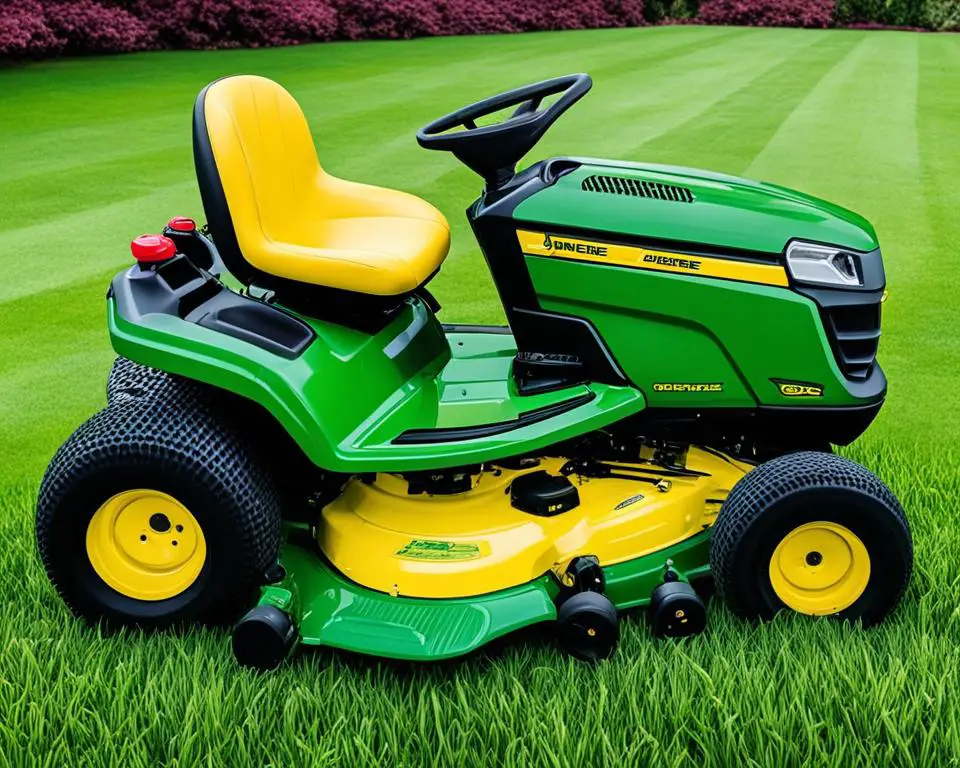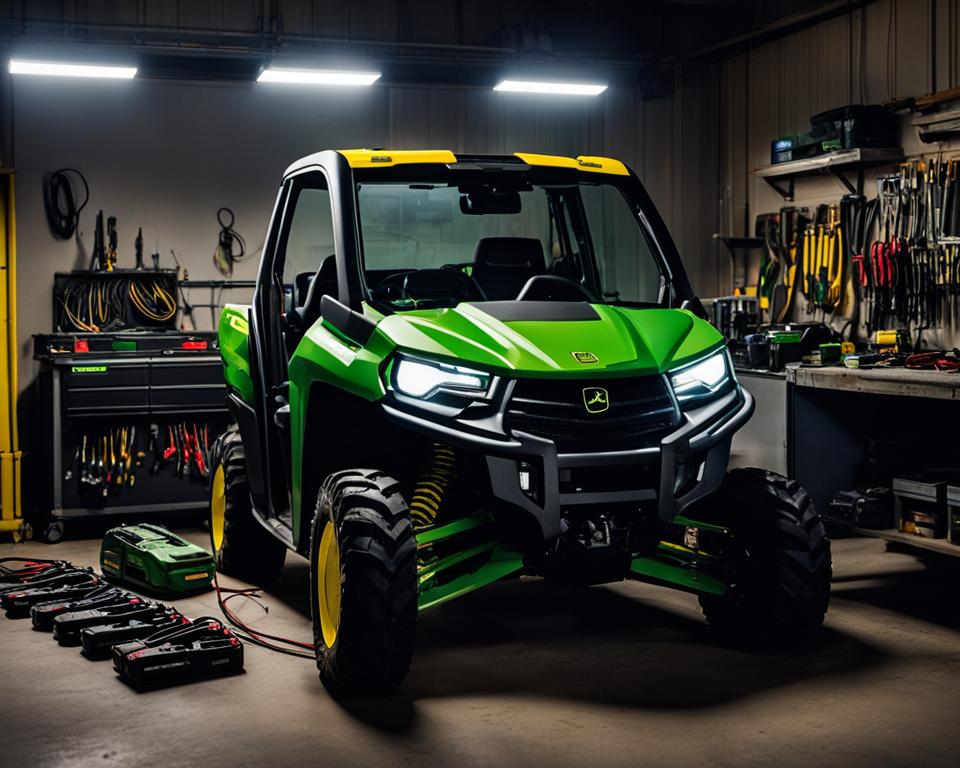If you own a John Deere X300 lawn tractor, you’re probably familiar with the reliable performance it offers. However, like any machine, the X300 can experience problems from time to time. It’s important to be aware of these common issues so that you can troubleshoot and fix them quickly, ensuring that your X300 continues to run smoothly.
In this article, we will explore some of the most prevalent problems that X300 owners encounter and provide practical solutions to address them. From engine issues to starting problems, steering difficulties to mower deck troubles, we’ve got you covered. Our goal is to equip you with the knowledge to resolve these issues on your own, save you time and money, and keep your X300 in top-notch condition.
Common John Deere X300 Engine Problems and Solutions
The engine of the John Deere X300, equipped with the renowned Kawasaki FH419V engine, may encounter various issues during its lifespan. To ensure your X300 performs optimally, it is crucial to address these common engine problems promptly and effectively. Some of the most frequently reported engine issues include:
- Overheating: Excessive heat can cause engine damage and lead to performance issues. Check the cooling fan to ensure it is functioning correctly. Clean any debris or dirt that may be obstructing airflow to prevent overheating.
- Rough Performance: A rough-running engine can be attributed to various factors. Begin by cleaning the spark plugs and carburetor to remove any build-up or deposits. If the problem persists, consider replacing the spark plugs, ignition coil, or fuel filter.
- Black Exhaust: A black exhaust is often indicative of a rich fuel mixture. Inspect the air filter for clogs or dirt accumulation, which can disrupt the air/fuel ratio. If necessary, replace the air filter and adjust the carburetor for optimal performance.
- Idling Problems: If your X300 experiences idle issues, it may be necessary to clean or replace the carburetor. Additionally, adjusting the idle speed screw can help fine-tune the engine’s idling performance.
- Backfiring: Backfiring during engine operation may occur due to a lean fuel mixture or an issue with the ignition system. Check the air filter and fuel lines for any restrictions. If the problem persists, consider inspecting and adjusting the valves.
By troubleshooting these common engine problems and implementing the recommended solutions, you can ensure that your John Deere X300 operates smoothly and reliably. Regular maintenance, including checking and replacing worn-out parts, is vital for the longevity and optimal performance of your X300.
Quote: “Don’t let engine problems hinder your John Deere X300’s performance. Take proactive steps to resolve these issues and enjoy a well-maintained lawn tractor.”
Fixing Common John Deere X300 Engine Problems: A Step-by-Step Guide
To help you troubleshoot and resolve engine issues more effectively, we have compiled a step-by-step guide to address the commonly encountered problems:
| Problem | Solution |
|---|---|
| Overheating | Clean the cooling fan and ensure proper airflow. |
| Rough Performance | Clean spark plugs and carburetor; consider replacing ignition coil, fuel filter, or air filter. |
| Black Exhaust | Inspect and clean/replace air filter; adjust carburetor settings. |
| Idling Problems | Clean or replace the carburetor; adjust idle speed screw. |
| Backfiring | Check for fuel line or air filter blockage; inspect and adjust valves if needed. |
Remember, while these solutions address common engine problems, it’s essential to consult your John Deere X300 operator’s manual for model-specific guidance. If the issue persists or requires specialized expertise, it’s recommended to seek assistance from a qualified John Deere technician.
Troubleshooting John Deere X300 Starting Problems
If you own a John Deere X300 and you’re experiencing starting problems, don’t worry, you’re not alone. There can be several reasons why your X300 won’t start. In this section, we will dive into some common starting issues and provide troubleshooting steps to help you get your X300 up and running.
Common Causes of Starting Problems
To fix your X300’s hard starting issues, it’s essential to identify the root cause. Here are some potential culprits to consider:
- Blown Fuse: A blown fuse can prevent your X300 from starting. Check the fuse box and replace any blown fuses.
- Corroded Battery Cables: Corrosion on the battery cables can disrupt the flow of electricity and prevent proper starting. Clean or replace corroded cables.
- Weak or Dead Battery: If the battery doesn’t have enough power, your X300 may struggle to start. Test the battery and replace it if necessary.
- Starter Issues: A faulty starter motor can hinder the starting process. Inspect the starter and replace it if needed.
- Ignition Switch Problem: A malfunctioning ignition switch can prevent the X300 from starting. Check the switch and repair or replace it if necessary.
- Spark Plug Problem: Worn-out or faulty spark plugs can cause starting difficulties. Inspect and replace spark plugs as needed.
- Fuel System Issue: Issues with the fuel system, such as clogged fuel filters or a faulty fuel pump, can prevent the engine from starting. Clean or replace fuel filters and check the fuel pump for proper functioning.
- Malfunctioning Parking Brake Switch: A faulty parking brake switch can sometimes interfere with the starting process. Ensure the parking brake switch is functioning correctly.
By diagnosing and addressing these common starting problems, you can save time and frustration when trying to start your John Deere X300.
Always refer to your X300’s user manual for detailed instructions on troubleshooting and maintenance.
Troubleshooting John Deere X300 Starting Problems
| Potential Cause | Troubleshooting Steps |
|---|---|
| Blown Fuse | 1. Check the fuse box for blown fuses. 2. Replace any blown fuses with the appropriate rating. |
| Corroded Battery Cables | 1. Disconnect the battery cables. 2. Clean the corrosion off the cables. 3. Reconnect the battery cables securely. |
| Weak or Dead Battery | 1. Test the battery voltage using a multimeter. 2. If the voltage is below the recommended threshold, replace the battery. |
| Starter Issues | 1. Inspect the starter motor for any visible damage. 2. If the starter motor is faulty, replace it with a new one. |
| Ignition Switch Problem | 1. Check the ignition switch for any signs of damage or malfunction. 2. If the ignition switch is faulty, replace it following the manufacturer’s instructions. |
| Spark Plug Problem | 1. Remove the spark plugs and inspect them for wear or damage. 2. Replace any worn-out or faulty spark plugs with new ones. |
| Fuel System Issue | 1. Check the fuel filters for any clogs or debris. 2. Clean or replace the fuel filters as necessary. 3. Inspect the fuel pump for proper functioning. Replace it if needed. |
| Malfunctioning Parking Brake Switch | 1. Check the parking brake switch for any signs of damage or malfunction. 2. Repair or replace the parking brake switch as needed. |
By following these troubleshooting steps and addressing the potential causes of starting problems, you can resolve the starting issues with your John Deere X300.
Resolving John Deere X300 Steering Issues
While steering issues with the John Deere X300 are relatively rare, some owners have reported difficulty turning left or right while mowing. This can be frustrating and hinder the efficiency of your lawn care tasks. In most cases, the problem lies within the gears of the steering system.
To effectively fix X300 steering issues, it is highly recommended to consult a qualified mechanic who specializes in John Deere tractors. They possess the expertise and knowledge to diagnose the problem accurately and provide the necessary repairs.
By entrusting your X300 to a professional, you can rest assured that the root cause of the steering problem will be identified and promptly resolved. It’s crucial to address any steering issues promptly to prevent further damage to the machine and ensure safe and comfortable operation.
If you are experiencing difficulties with your John Deere X300’s steering, don’t hesitate to contact a reputable mechanic for a thorough inspection and repair.

| Common X300 Steering Problems | Solutions |
|---|---|
| Difficulty turning left or right while mowing | Consult a qualified mechanic for diagnosis and repair |
Fixing John Deere X300 Mower Deck Problems
Many X300 owners have encountered various issues with their mower decks. Some of the common problems include belt slippage, leveling issues and chute clogging. To ensure a well-functioning mower deck and achieve an even grass cut, it’s important to troubleshoot and address these problems. Here are some helpful tips to fix the most common mower deck issues:
- Addressing Belt Slippage: If you notice that the belts on your X300 are slipping, it’s likely due to wear and tear. Regularly inspect the belts and replace any that are worn or damaged. Additionally, make sure the belts are properly tensioned according to the manufacturer’s recommendations. This will help maintain optimal performance and prevent belt slippage issues.
- Adjusting Mower Deck Blades: Uneven grass cuts can often be attributed to leveling issues with the mower deck blades. To resolve this problem, follow the user manual instructions to adjust the blade height. This will ensure that the blades are level and cutting the grass evenly. Regularly inspect the blades for damage and replace them if necessary.
- Preventing Chute Clogging: Chute clogging can occur when cutting wet or tall grass, causing clippings to accumulate and block the discharge chute. To prevent chute clogging, take care to mow at an appropriate speed and avoid cutting grass when it’s wet. Additionally, regularly inspect the chute for any debris buildup and clear it as needed.
By addressing these common mower deck problems, you can ensure that your John Deere X300 delivers a clean and even grass cut every time. Regular maintenance and proper troubleshooting techniques will help keep your mower deck in optimal condition.

Resolving Excessive Vibration in John Deere X300
Excessive vibration in the John Deere X300 can be a cause of concern for owners. Not only does it result in an uncomfortable ride, but it can also lead to secondary damage to the machine if left unresolved. To ensure a smooth operation and prevent further complications, it is essential to troubleshoot and address the vibration issues promptly.
The most common causes of excessive vibration in the John Deere X300 include:
- 1. Damaged Mower Blades: Worn or damaged blades can lead to imbalanced rotation, resulting in increased vibration. Inspect the blades for any signs of damage such as nicks, bends, or dents. If necessary, replace the damaged blades with genuine John Deere replacement blades.
- 2. Low Transmission Fluid: Insufficient transmission fluid levels can also contribute to excessive vibration. Check the transmission fluid level using the dipstick located near the transmission. If the fluid level is low, add the recommended fluid type according to the manufacturer’s guidelines.
By addressing these common causes, you can effectively reduce or eliminate excessive vibration in your John Deere X300. Regular maintenance and inspections are crucial to ensure optimal performance and prolong the lifespan of your machine.
Below is a table summarizing the common causes and solutions for resolving excessive vibration in the John Deere X300:
| Common Causes | Solutions |
|---|---|
| 1. Damaged Mower Blades | Inspect and replace damaged blades with genuine John Deere replacement blades. |
| 2. Low Transmission Fluid | Check transmission fluid level and add the recommended fluid type if necessary. |

For a visual reference, here’s an image of the John Deere X300 to help you identify its parts and components.
Troubleshooting John Deere X300 Fuel Pump Issues
If you own a John Deere X300 and are experiencing fuel delivery problems, it could be due to issues with the fuel pump. The fuel pump in the X300 has a sensor that plays a crucial role in regulating the fuel delivery to the engine. When this sensor malfunctions or if the fuel pump itself is faulty, you may encounter problems such as backfiring or random shut-offs.
To resolve these fuel pump issues, replacing the fuel pump may be necessary. It is recommended to consult the X300’s user manual or seek professional assistance to ensure the correct installation of the new fuel pump. Regular cleaning of the fuel pump is also essential to prevent debris from clogging the system. Additionally, checking for any damaged sensors and replacing them as needed will help ensure proper fuel delivery and prevent further issues.
Troubleshooting steps for John Deere X300 fuel pump problems:
- Refer to the X300’s user manual for specific instructions on replacing the fuel pump.
- Ensure all necessary tools and replacement parts are available before starting the replacement process.
- Disconnect the battery to avoid any electrical accidents while working on the fuel pump.
- Inspect the fuel lines and connections for any signs of damage or leaks.
- Clean the fuel pump using an appropriate cleaning solution and carefully remove any debris that may be blocking the system.
- Check the fuel pump sensor for any visible damage or signs of malfunction. Replace it if necessary.
- Install the new fuel pump according to the manufacturer’s instructions and reconnect all the connections.
- Reconnect the battery and start the engine to test the fuel pump’s functionality.
- Monitor the X300’s performance for any remaining fuel delivery issues. If problems persist, consider seeking professional help.
By following these troubleshooting steps and ensuring the proper maintenance of the fuel pump, you can address fuel delivery issues in your John Deere X300 and have it running smoothly again.
Conclusion
Despite the common problems that may arise with the John Deere X300 lawn tractor, it continues to be a popular choice among homeowners for their lawn care needs. By familiarizing yourself with these issues and implementing the recommended solutions, you can ensure the smooth operation of your X300. Regular maintenance, including the inspection and replacement of worn-out components, is essential to maximize the longevity and performance of your John Deere X300.
It is important to note that some problems may be beyond your expertise, and it is advisable to seek the assistance of a professional mechanic when necessary. Their specialized knowledge and experience can help diagnose and resolve more complex issues, ensuring the optimal functioning of your X300.
By staying proactive and addressing potential problems promptly, you can enjoy the reliability and effectiveness that the John Deere X300 offers. Whether you are tackling a small residential lawn or a larger property, the X300 remains a trusted companion in maintaining a pristine outdoor space.
FAQ
What are some common problems with the John Deere X300?
Some common problems X300 owners face include engine problems, starting problems, steering issues, mower deck problems, excessive vibration, fuel pump problems and hard starts.
What engine problems can occur with the John Deere X300?
Common engine issues include overheating, rough performance, black exhaust, idling problems, and backfiring. To fix these problems, you can check the cooling fan, clean the spark plugs and carburetor, replace the ignition coil, fuel filter, or air filter, and adjust the valves if necessary.
Why won’t my John Deere X300 start?
The problem could be due to various reasons such as a blown fuse, corroded battery cables, weak or dead battery, starter issue, ignition switch problem, spark plug problem, fuel system issue, or malfunctioning parking brake switch. We recommend checking and repairing these components as needed to solve the starting problem.
How can I fix steering issues with my John Deere X300?
Steering issues are relatively rare, but if you’re experiencing difficulty turning left or right while mowing, it may be caused by problems with the gears in the steering system. It is recommended to consult a qualified mechanic who can diagnose and repair the problem.
What are some common problems with the mower deck on the John Deere X300?
Common problems include belt slippage, leveling issues and chute clogging. To address belt slippage, regularly replace worn-out belts and ensure correct tension. For leveling problems, proper adjustment of the mower deck blades is necessary. Additionally, mowing at the appropriate speed and avoiding cutting wet or tall grass can help prevent chute clogging.
How can I resolve excessive vibration in my John Deere X300?
Excessive vibration can be caused by damaged mower blades and low transmission fluid. Checking and replacing damaged blades and ensuring sufficient transmission fluid can help resolve this problem.
What should I do if I have fuel pump issues with my John Deere X300?
If your tractor is experiencing backfiring or random shut-offs, it may be necessary to replace the fuel pump. Additionally, regular cleaning of the fuel pump and checking for damaged sensors can help ensure proper fuel delivery.
How can I keep my John Deere X300 running smoothly?
Regular maintenance, including checking and replacing worn-out parts, will help ensure the longevity and optimal performance of your John Deere X300. Remember that some problems may require the expertise of a mechanic, so don’t hesitate to seek professional help when needed.

Leave a Reply